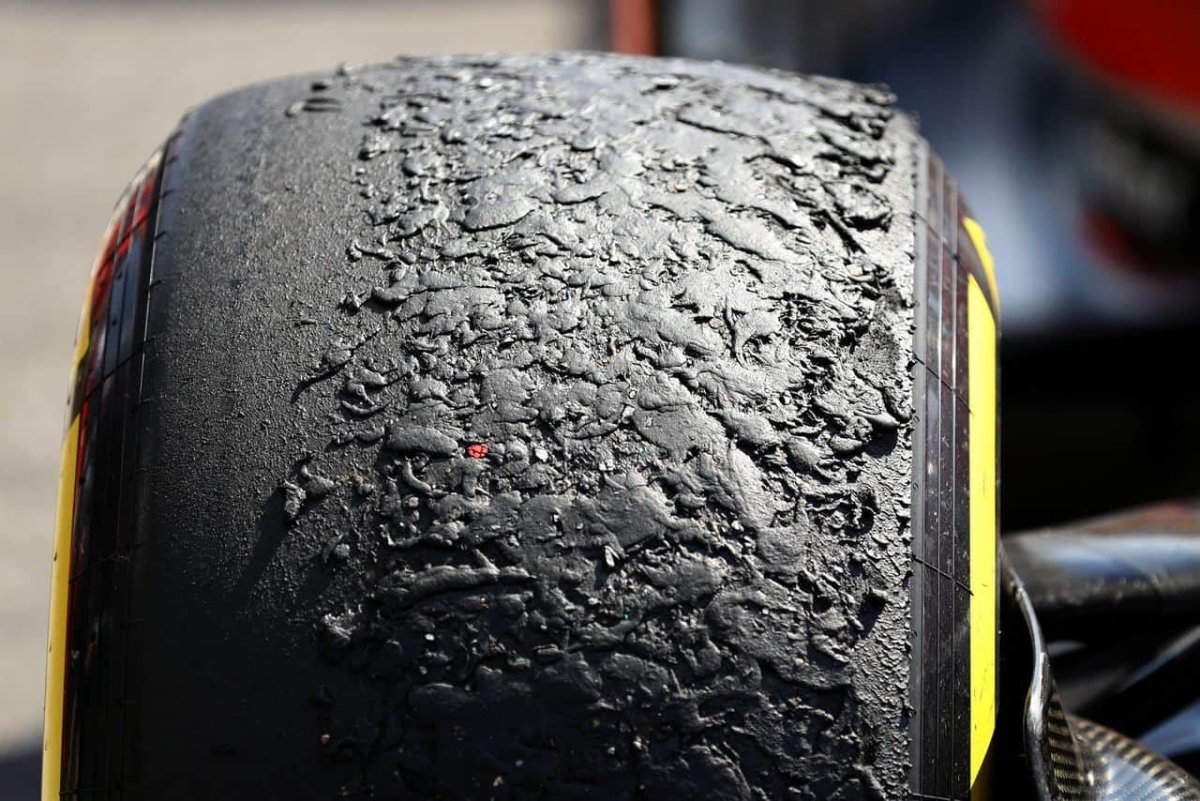
Understanding Tyre Degradation in Motorsport: How Drivers Manage It
In motorsport, tyre degradation is a critical factor that significantly impacts a driver's strategy and overall performance on the track. Whether in Formula 1, endurance racing, or other motorsport disciplines, understanding tyre degradation and how to work with it is essential for maximizing performance and securing a winning position. In this blog post, we will delve into what tyre degradation is, how drivers manage it, and the different types of tyre compounds used in racing.
What is Tyre Degradation?
Tyre degradation refers to the wear and tear that occurs on a tyre during a race. This wear can affect the tyre's grip, stability, and performance, leading to slower lap times. Degradation happens due to several factors, including friction between the tyre and the track surface, high temperatures, and the mechanical forces exerted on the tyres during cornering, braking, and acceleration.
There are two primary forms of tyre degradation:
-
Thermal Degradation: This occurs when tyres overheat due to excessive friction or poor cooling. As the tyre heats up, its rubber compound becomes less effective, losing grip and making the car harder to control. Once tyres are overheated, performance degrades quickly, and drivers may struggle with understeer or oversteer.
-
Wear Degradation: This is the physical wear that tyres undergo as they are used over a certain number of laps. As the tyre tread wears down, the grip decreases, which can impact the car's handling and lap times. Drivers need to adjust their driving style to compensate for the loss of grip as tyres wear down.
How Drivers Manage Tyre Degradation
Drivers work closely with their teams to manage tyre degradation throughout a race. Successful management can be the difference between victory and defeat. Here are some strategies drivers use:
-
Tyre Conservation: One of the key strategies drivers use to manage tyre degradation is conserving their tyres. This means driving in a way that minimizes wear and overheating. For example, drivers may avoid aggressive cornering, braking, or acceleration, especially during the early stages of a stint, to prolong the life of their tyres.
-
Temperature Management: Drivers and teams monitor tyre temperatures closely during the race. Staying within the optimal temperature range is crucial to maintain tyre performance. Drivers can manage temperatures by adjusting their driving style—avoiding long periods of heavy braking, taking corners more smoothly, and altering their racing line to reduce stress on the tyres.
-
Pit Stop Strategy: Tyre degradation directly influences pit stop strategy. Teams analyze the degradation rates during practice sessions to determine when to pit for fresh tyres. Timing a pit stop correctly can allow drivers to push harder when they need to, without risking excessive wear or overheating.
-
Driving Style Adjustment: As tyres degrade, drivers often need to adjust their driving style. For instance, they may brake earlier or more gently, carry less speed through corners, or modify their acceleration points to avoid spinning the tyres. These small adjustments can help manage the loss of grip and prolong the life of the tyres.
Tyre Compounds: Types and Usage
Tyre manufacturers, such as Pirelli in Formula 1, offer several different tyre compounds designed to perform under various conditions. Each compound has different characteristics in terms of durability, grip, and operating temperature. Typically, the softer the compound, the faster it wears out but offers better grip, while harder compounds are more durable but provide less grip.
There are three main types of tyre compounds used in racing:
-
Soft Compound Tyres: Soft tyres provide the most grip and allow for the fastest lap times but degrade quickly due to their softer rubber. They are usually chosen for short stints or qualifying sessions where speed is more critical than longevity. Soft tyres perform well in cool temperatures but can overheat quickly in warmer conditions.
-
Medium Compound Tyres: Medium tyres offer a balance between grip and durability. They are a popular choice for race conditions where drivers need to manage tyre wear over a longer stint without sacrificing too much performance. Medium tyres are often used during races where tyre management is critical, as they provide more longevity compared to soft tyres.
-
Hard Compound Tyres: Hard tyres are the most durable option, designed to last for a long time but offering less grip than softer compounds. They are typically used in hotter conditions or on abrasive tracks where tyre wear is a significant concern. Hard tyres allow drivers to go for longer stints without needing a pit stop but require careful management to maintain grip levels.
In addition to these dry compounds, there are two other types used in wet conditions:
-
Intermediate Tyres: Designed for damp but not fully wet conditions, intermediate tyres are used when the track is drying or when there is light rain. They offer more grip than slick tyres on a wet surface but are still suitable for conditions that aren’t fully soaked.
-
Wet Tyres: Wet tyres, or "full wets," are designed for heavy rain and wet track conditions. They have deep treads that help disperse water and prevent aquaplaning. Wet tyres provide the best grip in rainy conditions but are not suitable for dry or semi-dry tracks as they would degrade quickly.
Tyre degradation is an essential aspect of motorsport that can make or break a driver's race. Drivers and teams must carefully manage tyre wear, temperature, and degradation to optimize performance throughout the race. By understanding the characteristics of different tyre compounds and how to use them effectively, drivers can adjust their strategies to maximize both speed and durability, giving them the best chance of success on the track.
For racing fans, watching how drivers adapt to tyre degradation can be as thrilling as the action on the track itself, adding an extra layer of strategy and excitement to the sport.

